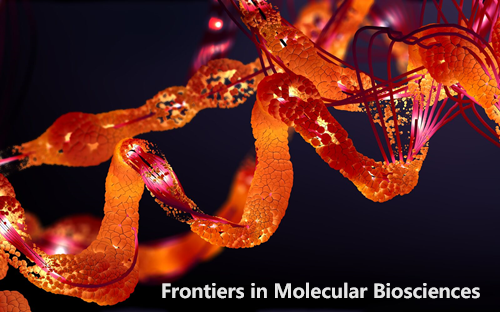α-Lipoic acid: a potential regulator of copper metabolism in Alzheimer’s disease
IF 3.9
3区 生物学
Q2 BIOCHEMISTRY & MOLECULAR BIOLOGY
引用次数: 0
Abstract
Alzheimer’s disease (AD) is characterized by classic hallmarks such as amyloid plaques and neurofibrillary tangles, however, intensive research has broadened its scope to explore additional underlying mechanisms. Notably, disruptions in metal homeostasis, particularly involving copper, have gained significant attention. In AD pathology, an imbalance is evident: there is an excess of extracellular copper alongside a deficiency in intracellular copper in brain tissue. Our previous work demonstrated that α-lipoic acid (LA) can effectively shift copper from the extracellular space to the intracellular environment in a neuronal cell model. However, the precise mechanism of action and role of LA in copper metabolism remained elusive. In this study, we compared the cellular effects of LA with those of different synthetic copper-binding ligands: diethyldithiocarbamate (DETC), clioquinol (CQ), D-penicillamine (D-PA) and elesclomol (ES). Using differentiated SH-SY5Y cell culture as a neuronal model, we found that, unlike other synthetic compounds, natural ligand LA is not toxic in the presence of extracellular copper, even at high doses. LA gradually increased intracellular copper levels over 24 h. In contrast, DETC, CQ, and ES acted as fast copper ionophores, potentially explaining their higher toxicity compared to LA. D-PA did not facilitate copper uptake into cells. We demonstrated that a slow increase of LA inside the cells is enhanced in the presence of copper. Furthermore, the ability of LA to modulate the equilibrium of extra- and intracellular copper was evident when we added copper isotopeα-硫辛酸:阿尔茨海默病中铜代谢的潜在调节剂
阿尔茨海默病(AD)以淀粉样蛋白斑块和神经纤维缠结等典型特征为特征,然而,深入的研究已经扩大了其范围,以探索更多的潜在机制。值得注意的是,金属平衡的破坏,尤其是涉及铜的破坏,已经引起了人们的极大关注。在注意力缺失症的病理中,失衡是显而易见的:在脑组织中,细胞外铜过量,而细胞内铜缺乏。我们之前的研究表明,在神经元细胞模型中,α-硫辛酸(LA)能有效地将铜从细胞外空间转移到细胞内环境。然而,LA在铜代谢过程中的确切作用机制和角色仍未确定。在这项研究中,我们比较了LA与不同合成铜结合配体(二乙基二硫代氨基甲酸乙酯(DETC)、氯喹诺尔(CQ)、D-青霉胺(D-PA)和伊利司莫(ES))的细胞效应。以分化的 SH-SY5Y 细胞培养作为神经元模型,我们发现,与其他合成化合物不同,天然配体 LA 在细胞外铜存在的情况下没有毒性,即使在高剂量下也是如此。相比之下,DETC、CQ 和 ES 是快速铜离子促进剂,这可能是它们的毒性高于 LA 的原因。D-PA 不能促进铜摄入细胞。我们证明,在铜存在的情况下,细胞内 LA 的缓慢增加会增强。此外,当我们加入铜同位素 65Cu 时,LA 调节细胞内外铜平衡的能力也显而易见。铜同位素的比例变化很快,这反映了LA在不影响铜运输网络的情况下对铜分布平衡的影响。我们的研究结果提供了令人信服的证据,表明α-硫辛酸有望成为一种无毒制剂,能够使阿尔茨海默氏症患者的铜代谢正常化。
本文章由计算机程序翻译,如有差异,请以英文原文为准。
求助全文
约1分钟内获得全文
求助全文
来源期刊

Frontiers in Molecular Biosciences
Biochemistry, Genetics and Molecular Biology-Biochemistry
CiteScore
7.20
自引率
4.00%
发文量
1361
审稿时长
14 weeks
期刊介绍:
Much of contemporary investigation in the life sciences is devoted to the molecular-scale understanding of the relationships between genes and the environment — in particular, dynamic alterations in the levels, modifications, and interactions of cellular effectors, including proteins. Frontiers in Molecular Biosciences offers an international publication platform for basic as well as applied research; we encourage contributions spanning both established and emerging areas of biology. To this end, the journal draws from empirical disciplines such as structural biology, enzymology, biochemistry, and biophysics, capitalizing as well on the technological advancements that have enabled metabolomics and proteomics measurements in massively parallel throughput, and the development of robust and innovative computational biology strategies. We also recognize influences from medicine and technology, welcoming studies in molecular genetics, molecular diagnostics and therapeutics, and nanotechnology.
Our ultimate objective is the comprehensive illustration of the molecular mechanisms regulating proteins, nucleic acids, carbohydrates, lipids, and small metabolites in organisms across all branches of life.
In addition to interesting new findings, techniques, and applications, Frontiers in Molecular Biosciences will consider new testable hypotheses to inspire different perspectives and stimulate scientific dialogue. The integration of in silico, in vitro, and in vivo approaches will benefit endeavors across all domains of the life sciences.
 求助内容:
求助内容: 应助结果提醒方式:
应助结果提醒方式:


